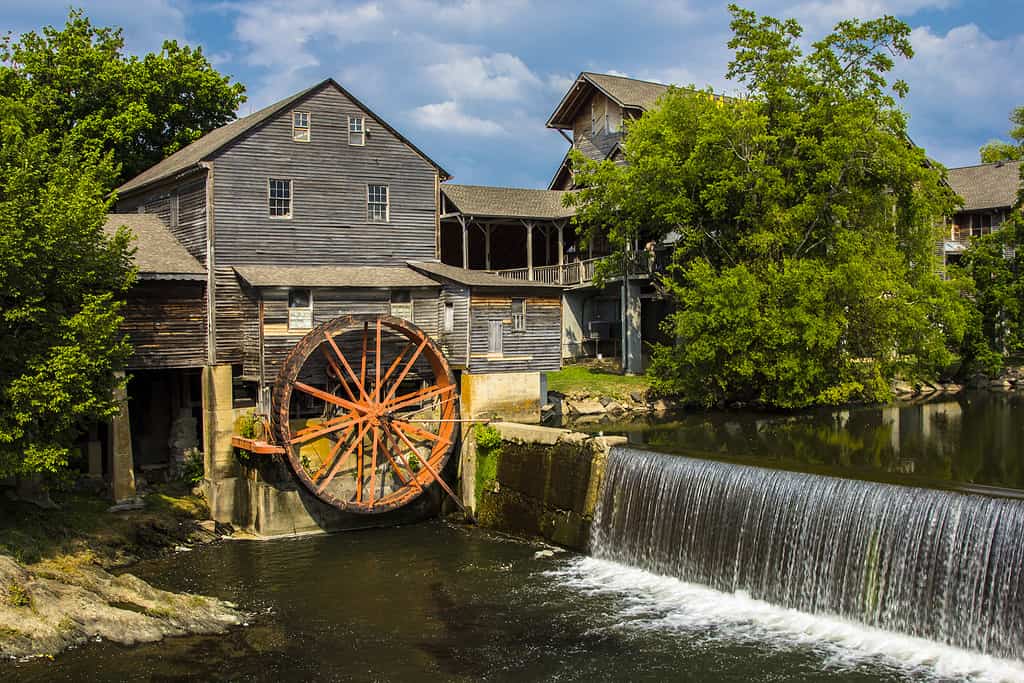Introduction
Located in the upper southern portion of the United States, Tennessee is one of the most naturally beautiful states in the country. In addition, the state features a deep and fascinating history that spans centuries. Furthermore, the origin of the state’s name reflects the people group that originally lived there. Discover how Tennessee got its name and find out about the state’s major cities.
Overview of Tennessee
Tennessee was admitted into the Union on June 1, 1796, as the 16th state of the United States. Some states that border Tennessee include Kentucky, Alabama, North Carolina, Missouri, and more. Tennessee’s population numbers around 6.975 million residents, as of 2021. In addition, the capital of Tennessee is Nashville, which boasts around 692,587 residents, as of 2018. The state covers approximately 42,144 square miles and reports a Gross Domestic Product (GDP) of 367.78 billion U.S. dollars, as of 2022.

Tennessee features incredible natural beauty and rustic charm. Pictured here is the Pigeon Forge Mill, found in Pigeon Forge, TN.
©Scott Prokop/Shutterstock.com
How Did Tennessee Receive its Name?
The name “Tennessee” derives from the Cherokee people group, and a sect of the Cherokee once lived in a village called “Tanasse” or “Tennese.” The Tennessee River also inspired the name of the state. Before receiving its name, though, Tennessee was called the Territory South of the River Ohio.
While most historians agree that “Tennessee” derives from the Cherokee, many debate the meaning of the word Tennessee. Some believe that “Tennessee” means “meeting place,” others claim it means “bend in the river,” and still more interpretations have been proposed. Overall, though, the exact meaning of the name Tennessee is a mystery.
Who Were the Cherokee?
The Cherokee were a Native American people group in North America. The term “Cherokee” means “people of different speech.” Around the year 1650, estimates show that approximately 22,500 members of the Cherokee people group lived in North America. In addition, they covered around 40,000 square miles. Cherokee land and villages geographically ranged from present-day North Carolina through Tennessee and as far south as Georgia. Moreover, many Cherokees controlled the land in and around the Appalachian Mountains.
Furthermore, the Cherokee were divided between two main types of towns. Some members lived in red towns, which symbolized war, while others resided in white towns, representing peace. Each town fell under the authority of the supreme peace and supreme war chiefs. Certain ceremonies, rituals, and practices in these towns were celebrated and observed according to a town’s designation. For instance, war ceremonies occurred in red towns.

The flag of the Cherokee Nation, which once lived throughout Tennessee and other southeastern states.
©Royal Graphics/Shutterstock.com
Cherokee Lifestyle
Most Cherokee towns ranged between 30 and 60 houses with a main house for meetings and rituals. In addition, the Cherokee farmed the land, growing crops like corn, squash, and beans. The Cherokee people used the flesh of animals like deer and bears for food and clothing. Moreover, they also created tools and goods, such as axes, knives, pottery, and baskets.
Climate in Tennessee
Tennessee’s climate is described as moderate, characterized by warm summers and cool winters. In addition, winters in this state are not especially cold, and snow rarely falls throughout the state. However, precipitation in Tennessee is common, and the state sees around 51 inches of rainfall every year.
Around the capital city of Nashville, temperatures during January range from 30ºF to the mid-40sºF on average. On the other hand, July sees temperatures between 85ºF and 95ºF in Nashville. However, Nashville sits in Middle Tennessee, which experiences different temperature averages compared to East and West Tennessee. For instance, East Tennessee features the Appalachian Mountains, and the increase in elevation in the East results in cooler temperatures than those experienced in West and Middle Tennessee.

The Blue Ridge Mountains, part of the Appalachian Mountains, are found in East Tennessee. This region sees cooler winter temperatures than those experienced in West or Middle Tennessee due to elevation differences.
©Yiwenz/Shutterstock.com
Prominent Cities in Tennessee and Origins of Their Names
The three most prominent cities are Memphis, Nashville, and Knoxville, located in West, Middle, and East Tennessee, respectively. Another main city is Chattanooga, located in the state’s southeastern portion. Discover more about each of Tennessee’s main cities and how they received their names.
Memphis
Memphis was established in 1819, and the city is named after a city of Ancient Egypt, also called Memphis. The Mississippi River runs along Memphis, as the Nile River once ran along the city of Memphis, Egypt. Therefore, this city in Tennessee pays homage to a famous ancient city that also sat close to a large and influential river.
The population of Memphis lies around 628,127 residents, as of 2021. In addition, the GDP of the city measures around 86.493 billion U.S. dollars. The total area of Memphis covers approximately 302.6 square miles. One interesting fact about the city is that it is one of the most dangerous cities in the United States due to its high violent crime rate.

Memphis’s violent crime rate makes it one of the most dangerous cities in the United States.
©Sean Pavone/Shutterstock.com
Nashville
The capital of Tennessee, Nashville, was founded in 1779 and was originally named Fort Nashborough. The city was named after Francis Nash, who fought in the American Revolution. Nashville’s population numbers approximately 692,587 residents, and the GDP of Nashville measures around 163.031 billion U.S. dollars. In addition, Nashville covers a total area of 527.9 square miles.
Many people refer to Nashville as “Music City” because of the city’s reputation for creating incredible music and producing many country-music stars. Most music in Nashville focuses on the country genre, and several popular artists live throughout and around Nashville. One major attraction in Nashville includes Broadway, which is a street downtown that features Honky Tonk bars and live music every night of the week.

Nashville, TN is the state capital and a top tourist destination in the state.
©Kevin Ruck/Shutterstock.com
Knoxville
Knoxville was first settled in 1791 and named after Henry Knox, who was the War Secretary of President George Washington. The population of Knoxville numbers around 192,648 residents, making it smaller than both Nashville and Memphis. Knoxville’s GDP measures approximately 43.595 billion U.S. dollars, as of 2021. In addition, the total area of Knoxville covers around 104.3 square miles and sits near the Smoky Mountains along the Appalachian Mountains.
Knoxville’s most prominent feature is the University of Tennessee Knoxville, which enrolls over 25,000 undergrads. The University of Tennessee features strong academic programs in the fields of business, nursing, and more. In addition, the school has an impressive football program that remains a member of the SEC. Other attractions and features of Knoxville include historic buildings, the Dogwood Arts Festival, the Knoxville Museum of Art, and the nearby city of Gatlinburg, nestled in the Smoky Mountains.

The city of Knoxville is found in East Tennessee and features the University of Tennessee Knoxville.
©Kevin Ruck/Shutterstock.com
Chattanooga
Chattanooga was first settled in 1815 by John Ross. The site was originally called Ross’s Landing, but the name was changed to Chattanooga. The name Chattanooga derives from the Creek people group. Chattanooga means “rock rising to a point,” which refers to Lookout Mountain, found near the city.
The city’s population measures around 182,113 residents, making it the smallest of Tennessee’s four main cities. In addition, the GDP of Chattanooga measures 28.336 billion U.S. dollars, as of 2021. The city’s total area covers 143.2 square miles, and the University of Tennessee Chattanooga is found there. Some attractions in the city include the Tennessee Aquarium, Lookout Mountain, and the Hunter Museum of American Art.

The Tennessee Aquarium is one of Chattanooga’s best attractions.
©Rob Hainer/Shutterstock.com
Origins of Names in Tennessee: A Summary
| Name | Origin and Meaning |
|---|---|
| Tennessee | Cherokee village called “Tanasee” or “Tennese” meaning “meeting place,” “bend in the river,” and other interpretations |
| Memphis | Ancient city of Memphis, Egypt along the Nile River |
| Nashville | Named for Francis Nash, who fought in the American Revolution |
| Knoxville | Named for Henry Knox, War Secretary of President George Washington |
| Chattanooga | Creek work meaning “rock rising to a point,” referring to Lookout Mountain |
The photo featured at the top of this post is © rarrarorro/Shutterstock.com
Thank you for reading! Have some feedback for us? Contact the AZ Animals editorial team.






